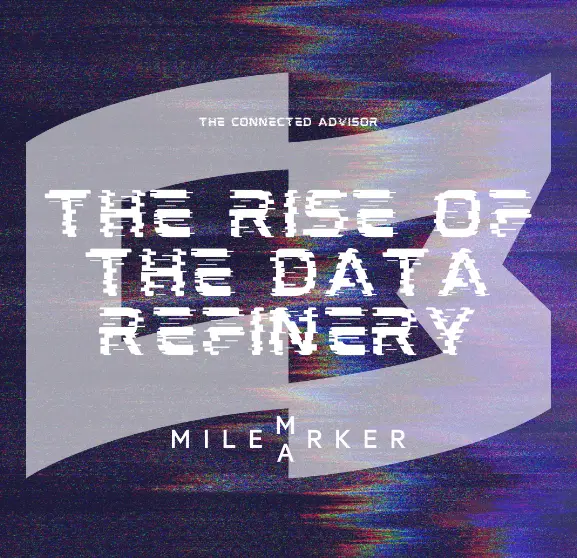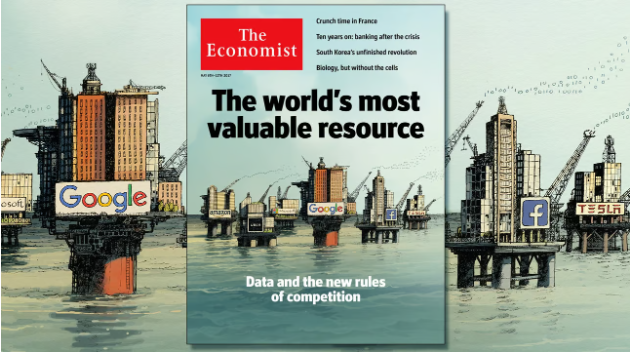Years ago, The Economist reported that data had overtaken oil in value. Data was the new oil.
This marked a milestone in tech psychology, as many people began to understand that all the accessible technology they used had made the user the product.
The Economist, May 2017
With Cambridge Analytica fresh in our minds and the PTSD of the 2016 election cycle, all of us were beginning to think of our data differently.
In fact, around this time, I spent 50+ times a year in rooms full of advisors, where I would use this video as my icebreaker.
The Parts Finding Their Sum
Raw data and unrefined oil really only have potential value.
The American Gulf Coast landscape tells the story of what crude oil needs to be useful – refineries.
In the same way, all our data needs to be refined. It must be gathered consistently, defined, and analyzed to become actionable.
Today, wealth management businesses worldwide have a lot of data and every day, they gather more.
It’s sprawling and wild.
Each day brings new contact records, a log of every IP address that interacts with your marketing assets, every transaction and position and trade — all of it data that is yours. Left unstructured and without care, you aren’t able to see the story that the data wants to tell you.
Refining your data is how you can make take all of that information and understand what your most impactful next steps should be.
The Refined Class
The next generation of advisory firms is becoming incredibly self-aware. Fueled by the insights that their boards or Private Equity partners demand, we see firms that can now understand their actual cost of business—the cost of each element of their software suite or staff.
This isn’t just a broad-based measure. With the data refinery process, you can associate all those costs down to the client, client segment, client size, BPs, and whether or not you are paying a referral to your friendly neighborhood custodial relationship on those specific clients.
The Acquirers
The simple fact is that the more you own and control your data, the more valuable your firm will be. There are multiple reasons for this.
By being data-driven, you can gain better intentionality across your business.
If you know the acquisition cost, you start investing in growth. If you understand the service cost, you can better find ways to scale or invest in your team, third-party relationships, or the systems that can help you increase your value stack (e.g., Pontera, Mammoth, etc.)
Those that can refine data tend to lead deals and set the price.
If you are not consistently and proactively working with your insights, you are highly unlikely to be in the driver’s seat when you are going through an acquisition. In short, you will have your value set for you instead of driving it based on anything beyond your standard revenue-based multiple.
Those that acquire are compounding disparate systems into a singular discipline chassis.
While it takes time to do this, it is where acquirers are gaining massive scale and momentum.
Back to the Start
It’s important for each firm to start to gain a shared vision for the insights that will be unlocked for them. If you think back to the Great Hack trailer at the beginning of this article, it’s easy for us to assume that our technology is listening to us and acting on us.
Most of us don’t assume that of wealth management firms.
The future will have firms that are incredibly aware of the moment a prospect visits a marketing asset, from when that party becomes a client, and then begin to act consistently with their client technology. This will trigger your client service team to reach out and preempt any client uncertainty or possible attrition.
When your advisors are constantly being courted by other platforms to take a check or find their new home, you can meet them with transparency and clarity on how their long-term future looks based on the value of your firm, the value of their shares, their historic earnings, and their forecast.
You will couple this with transparency on how your firm is reinvesting in growth and showing them how every dollar spent in growth contributes to a certain return on investment.
This starts with crude data, but it can become refined confidence for your business.
What insights are you working to unlock with your data today?


